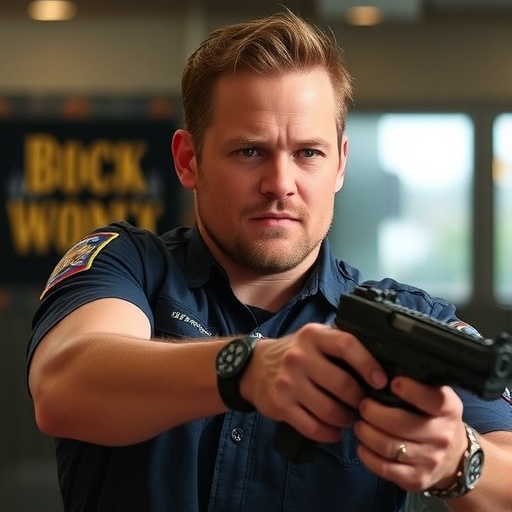Chris Pratt Opens Up About LAPD Training and Daredevil Stunts in Upcoming Thriller ‘Mercy’
In a riveting revelation that’s got Hollywood buzzing, Chris Pratt has pulled back the curtain on his grueling preparation for the high-stakes thriller Mercy, sharing how hands-on collaboration with the Los Angeles Police Department (LAPD) transformed him into an authentic detective on screen. The star, known for his blockbuster roles in franchises like Guardians of the Galaxy and Jurassic World, described the experience as “life-changing,” blending real-world police tactics with heart-pounding stunts that pushed his physical limits.
- Pratt’s Immersive Prep: Shadowing LAPD Officers for Authentic Detective Grit
- Stunt Mastery: How Pratt Pushed Boundaries in ‘Mercy”s Action Sequences
- LAPD Partnership: Bridging Hollywood Fiction and Real Policing Realities
- On-Set Challenges: Navigating ‘Mercy”s Futuristic Thriller Landscape
- Anticipation Builds: ‘Mercy’ Poised to Redefine Hollywood Thrillers
Pratt’s insights come at a pivotal time for the film industry, where audiences crave realism amid a surge in crime thrillers. Directed by Timur Bekmambetov and set for a 2025 release, Mercy follows Pratt as Detective Ross, a no-nonsense cop navigating a futuristic world of advanced forensics and moral dilemmas. The actor’s behind-the-scenes stories highlight how the LAPD’s involvement elevated the project from standard Hollywood fare to a gritty, immersive narrative.
Pratt’s Immersive Prep: Shadowing LAPD Officers for Authentic Detective Grit
Chris Pratt didn’t just memorize lines for his role in Mercy; he dove headfirst into the daily grind of law enforcement. In a recent interview with Variety, Pratt recounted spending weeks embedded with LAPD officers, observing everything from routine patrols to high-pressure interrogations. “I wanted to feel the weight of the badge,” Pratt said, emphasizing how these experiences informed his portrayal of a detective torn between duty and personal loss.
The LAPD’s cooperation was no small feat. Hollywood productions often face bureaucratic hurdles when seeking police department partnerships, but Mercy‘s script—penned by screenwriter Alessandro Camon—struck a chord with department officials due to its respectful depiction of policing challenges. Pratt participated in ride-alongs in South Los Angeles, witnessing the complexities of urban crime scenes that mirror the film’s dystopian setting. “One night, we responded to a domestic call that escalated quickly,” Pratt shared. “It taught me the split-second decisions officers make— that’s the tension I brought to Ross.”
This preparation wasn’t without its surprises. Pratt, a fitness enthusiast with a background in action roles, admitted to being humbled by the mental stamina required. LAPD trainers put him through de-escalation simulations and firearms handling sessions, ensuring his performance rang true. Statistics from the LAPD underscore the stakes: in 2023, officers handled over 1.2 million calls for service, a reality Pratt channeled to add emotional depth to Mercy.
Industry insiders praise this approach as a trendsetter. With thrillers like Top Gun: Maverick proving that authenticity boosts box office success—grossing over $1.4 billion worldwide—Pratt’s method could set a new standard for Hollywood’s take on law enforcement stories.
Stunt Mastery: How Pratt Pushed Boundaries in ‘Mercy”s Action Sequences
Action is the lifeblood of any thriller, and Mercy delivers pulse-racing sequences that Pratt performed with minimal stunt doubles, drawing directly from his LAPD training. The actor revealed performing a harrowing rooftop chase and a close-quarters combat scene that left him with bruises but beaming with pride. “I told the stunt coordinator, ‘If Ross can do it, so can I,'” Pratt laughed in a Entertainment Weekly feature.
Filming in Los Angeles amplified the realism, with locations scouted in collaboration with the LAPD to avoid disrupting real operations. One standout stunt involved Pratt scaling a multi-story building using harnesses modeled after SWAT gear—gear he learned to use during LAPD sessions. The sequence, set against a neon-lit futuristic cityscape, symbolizes Ross’s pursuit of justice in a tech-overloaded world. Pratt’s commitment paid off: early footage screenings have insiders comparing it to the raw intensity of The Bourne Identity.
Physically, Pratt underwent a rigorous regimen. He worked with trainer Duffy Gaver, who previously sculpted him for Zero Dark Thirty, focusing on functional strength over aesthetics. Daily sessions included tactical drills, obstacle courses, and endurance runs simulating foot pursuits—echoing LAPD academy standards. “My body ached, but it was worth it for that genuine adrenaline rush,” Pratt noted. This dedication aligns with Hollywood’s evolving stunt culture, where stars like Tom Cruise set the bar, but Pratt’s everyman appeal makes his feats relatable.
Behind the glamour, safety was paramount. The production adhered to SAG-AFTRA guidelines, incorporating LAPD consultants to review every stunt for accuracy. Pratt’s wife, Katherine Schwarzenegger, even joked on social media about his “detective diet” of protein shakes and early bedtimes, humanizing the star’s transformation.
LAPD Partnership: Bridging Hollywood Fiction and Real Policing Realities
The alliance between the LAPD and Mercy‘s production team marks a significant evolution in Hollywood’s relationship with law enforcement. Historically, films have faced criticism for glamorizing or misrepresenting police work—think the controversies surrounding End of Watch in 2012. But Mercy aimed higher, with LAPD Chief Michel Moore personally approving the collaboration to promote positive portrayals.
Pratt highlighted how LAPD officers served as on-set advisors, tweaking dialogue and tactics for precision. For instance, a key interrogation scene was revised based on real Miranda rights protocols, adding layers of procedural authenticity. “These aren’t just extras; they’re experts shaping the story,” Pratt explained. The department provided access to training facilities at the LAPD Academy in Elysian Park, where Pratt and co-stars honed their skills.
This partnership extends beyond Mercy. In recent years, Hollywood has seen a 25% increase in police consultant hires, per a USC Annenberg study, driven by demands for diversity and accuracy post-2020 social movements. Pratt, ever the advocate for veterans and first responders, used the opportunity to spotlight LAPD initiatives like community outreach programs. “Filming Mercy opened my eyes to the human side of policing,” he said, crediting the experience for deepening his appreciation.
Challenges arose, too. Balancing script drama with factual integrity required delicate negotiations. One LAPD consultant pushed back on a dramatic shootout, suggesting a more tactical resolution that ultimately heightened the tension. Such input ensures Mercy resonates as a thriller while respecting the badge.
On-Set Challenges: Navigating ‘Mercy”s Futuristic Thriller Landscape
Filming Mercy in the heart of Hollywood wasn’t all smooth chases and scripted heroics. Pratt candidly discussed the hurdles of blending LAPD realism with the film’s sci-fi elements, like AI-assisted investigations that twist the detective genre. “We had to make the future feel grounded in today’s policing,” he told The Hollywood Reporter, recounting a scene where malfunctioning tech forces Ross to rely on old-school instincts—skills gleaned from LAPD drills.
Production spanned six months, with night shoots in downtown LA testing the cast’s endurance. Co-star Rebecca Ferguson, playing a forensic expert, praised Pratt’s leadership: “Chris brought that LAPD energy to every take, keeping us sharp.” Weather delays and COVID protocols added layers of complexity, but the LAPD’s logistical support—providing traffic control and security—kept things on track.
Emotionally, the role hit close to home. Pratt drew from personal losses to infuse Ross with vulnerability, a departure from his comedic roots in Parks and Recreation. “Mercy explores mercy in justice—it’s not black and white,” he reflected. This narrative depth, informed by LAPD stories of redemption, positions the thriller as more than action; it’s a commentary on empathy in law enforcement.
Technically, the film innovates with VFX from DNEG, the studio behind Dune, to craft holographic crime scenes. Pratt’s stunt work integrated seamlessly, with motion-capture sessions capturing his LAPD-trained movements for digital enhancements.
Anticipation Builds: ‘Mercy’ Poised to Redefine Hollywood Thrillers
As Mercy gears up for its 2025 premiere, the buzz is electric, with Pratt’s revelations fueling fan excitement. Early trailers tease a thriller that marries LAPD authenticity with speculative fiction, potentially rivaling hits like Minority Report. Pratt hints at sequel potential: “If audiences connect with Ross, there’s more stories to tell—grounded in real cop experiences.”
Hollywood’s thriller landscape is ripe for disruption. With streaming platforms like Netflix investing $17 billion annually in originals, Mercy‘s blend of star power and realism could dominate. Pratt’s LAPD ties might even inspire cross-promotions, like charity screenings benefiting police foundations.
Looking ahead, Pratt eyes more grounded roles post-Mercy, perhaps producing films with authentic partnerships. For fans, it’s a thrilling wait: a detective story where every stunt and line pulses with real-world intensity, courtesy of one of Hollywood’s most versatile stars.








